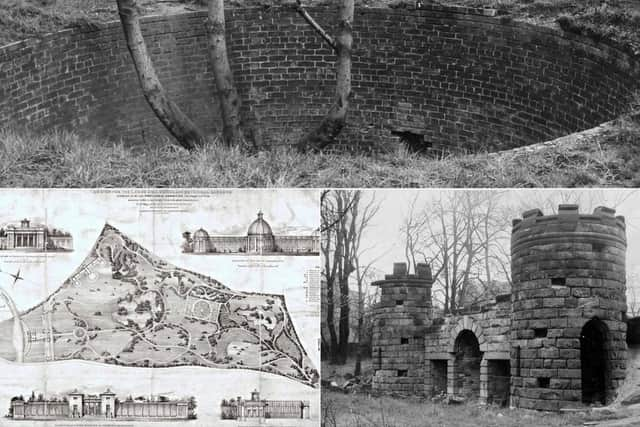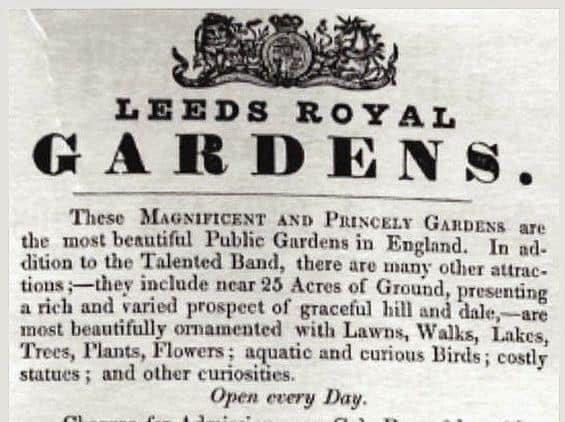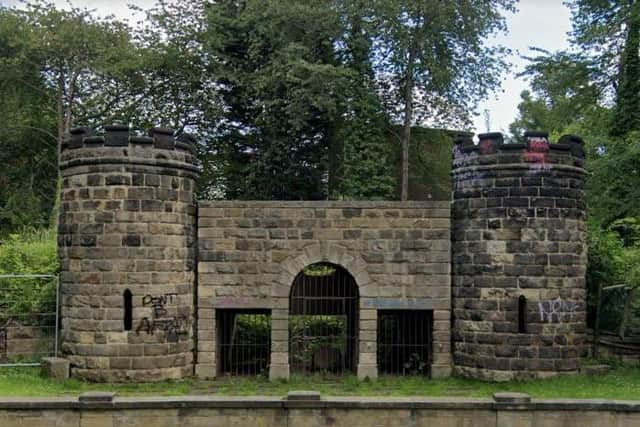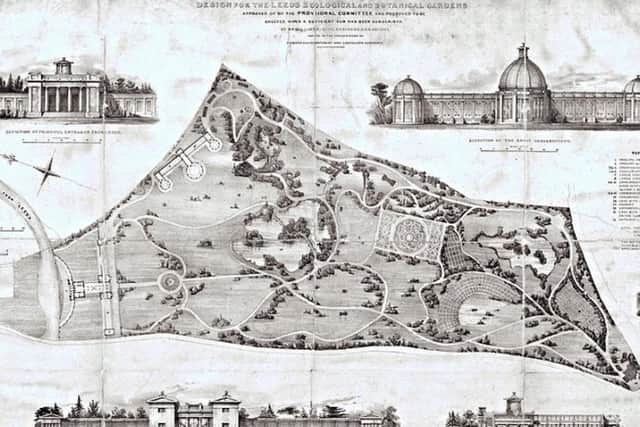The fascinating story behind the Headingley Bear Pit - and the failed Leeds Zoo behind it
and live on Freeview channel 276
Believe it or not, this was actually a bear pit that formed part of Leeds Zoological and Botanical Gardens, or the Headingley Zoo as it was also known.
It's stood there for almost 200 years, but most people don't know the story behind it.
Advertisement
Hide AdAdvertisement
Hide AdAs the population of Leeds started to grow rapidly in the early 1800s, the political classes began to fear a lack of green spaces for the expanding populations to spend time in would lead to drunkenness and gambling.


This was also a time when specimens were brought back from the fast-expanding British Empire and kept as pets in Britain, in both public zoos and private collections.
Botanical gardens were being opened in cities like Sheffield, Liverpool, Manchester, London and Birmingham and not wanting to lose out, a company in Leeds raised shares to create such a garden in the city.
An area of land off Cardigan Road in Headingley was chosen as the site of the Leeds zoo, due to its distance from the industrial pollution of the city centre and its proximity to the newly-built villas owned by the middle classes who were expected to promenade in its botanical gardens.
Advertisement
Hide AdAdvertisement
Hide AdThe bear pit which can still be seen today - it's now a listed building - was constructed, and there was also a monkey enclosure, swans and an eagle when the new attraction opened in 1840.


The Leeds Mercury said at the time: "Surrounded by a high wall within which on the west, south and east, is a plantation of trees in proper botanical arrangement, and on the north are fruit trees trained against a wall.
"Beautiful slopes of grass, tasteful parterres and shrubberies, with winding walks, two very handsome ponds with islands and a beautiful fountain.
"Near the entrance to the grounds from Headingley is a conservatory containing a beautiful collection of geraniums and a variety of exotic plants and flowers.
Advertisement
Hide AdAdvertisement
Hide Ad"The general appearance of the gardens is exceedingly beautiful, interesting, and lively, and though we hope to see their attractions heightened by the addition of the aviary, conservatories, & originally intended, yet even at present they form a most attractive place of resort."


Visitors were said to be able to feed bananas to the bear when it climbed up a tree inside the pit to reach the top.
Bear-baiting had in fact been outlawed by this time, so they were kept for interest and scientific study in pits built to resemble wishing wells. An unfortunate incident at the Orangery in Wakefield during this period saw a captive bear escape and kill a woman before going on a rampage around the gardens.
The Headingley brown bear would be viewed from the turrets above the pit, with visitors climbing spiral stairs to access the platform.
Advertisement
Hide AdAdvertisement
Hide AdThere was great excitement at the zoo's opening, and the modern Burley Park Station was even named Royal Gardens Station to entice visitors.


Yet the feted venture lasted only eight years, and by 1848 the entire site had been sold to businessman Thomas Clapham for building plots.
Problems arose after it was decided that the zoo would only open late on Sunday afternoons to protect church attendances.
Yet Sunday was the only day off for mill and factory workers, and it struggled to attract large numbers of working-class families during this brief window of opportunity.
Advertisement
Hide AdAdvertisement
Hide AdTicket prices were also deemed to be too high, even for middle-class residents of Headingley.
More villas were eventually constructed in the area, leaving the bear pit - now a Grade II-listed structure - marooned on its own.
One of the original fountains can still be found in what is now a private garden, and several exotic plant and tree specimens remain visible on the old site.